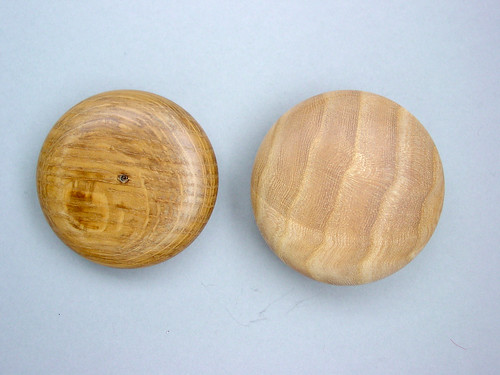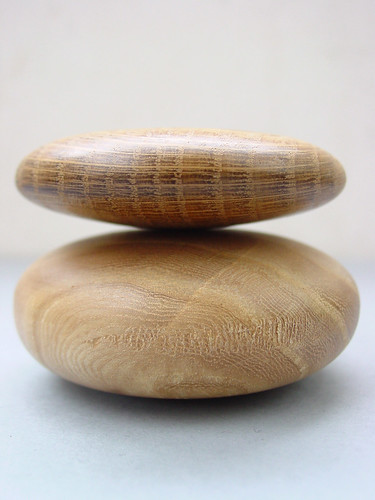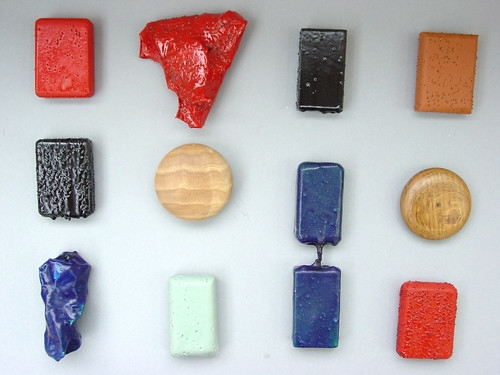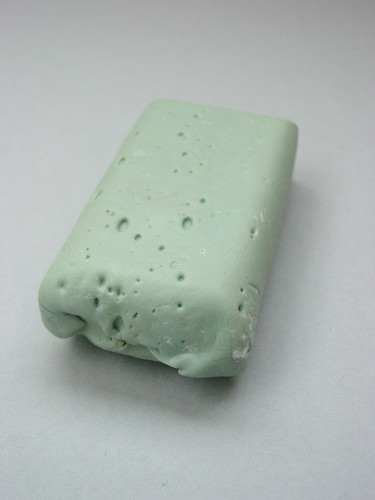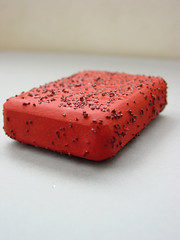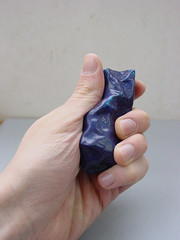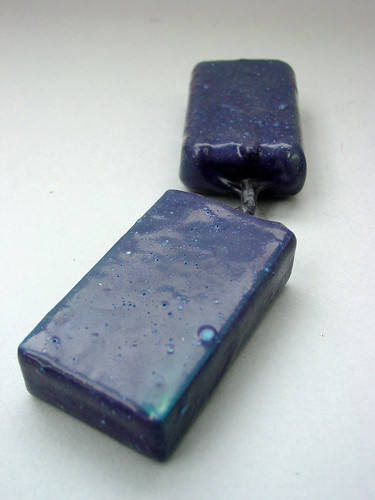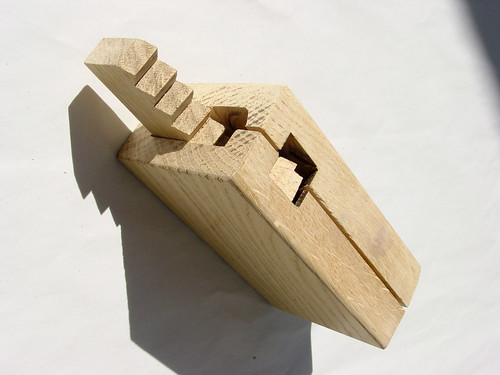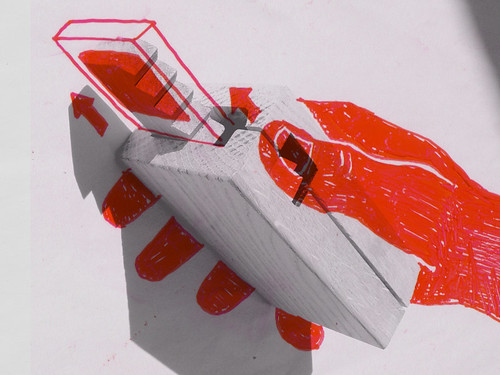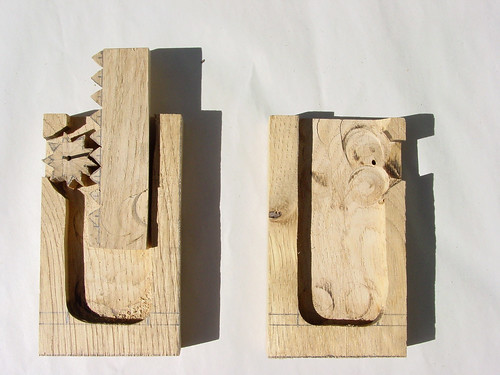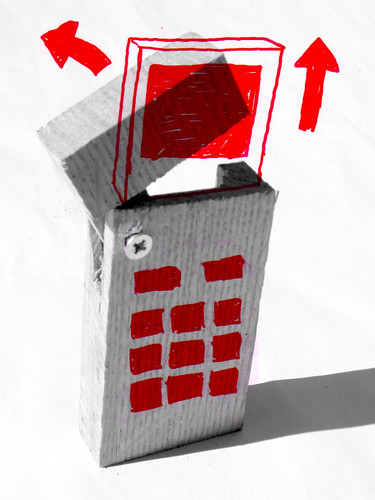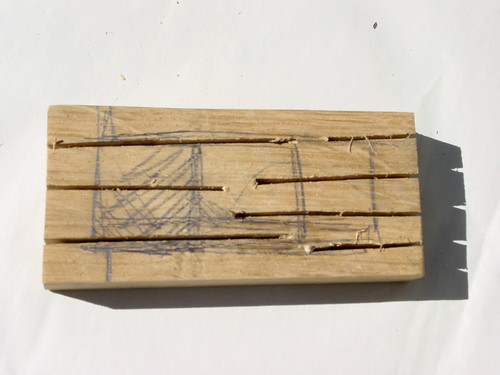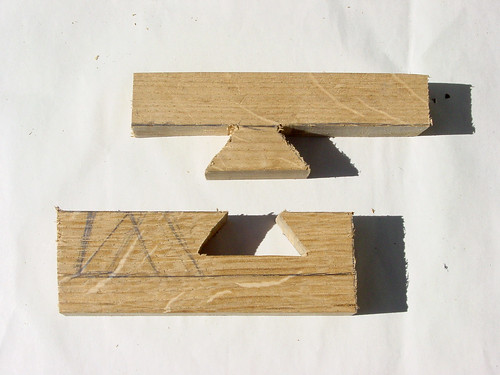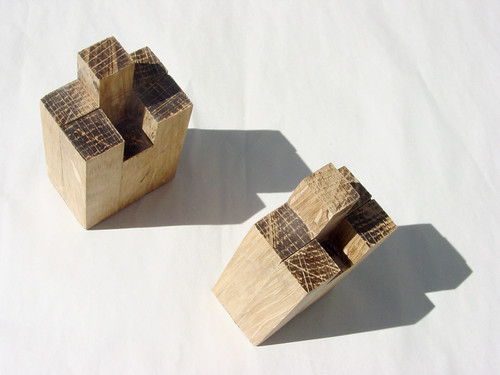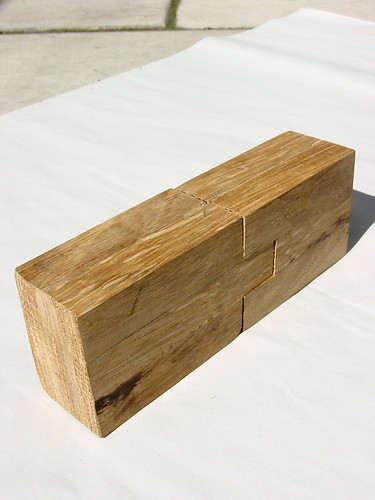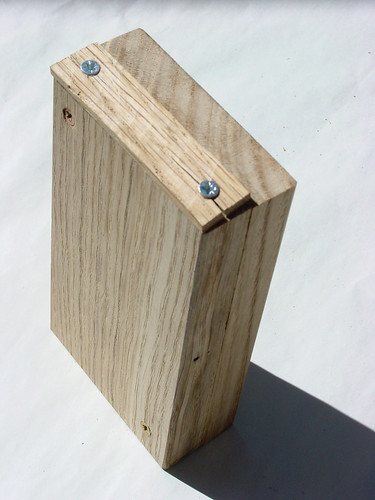This material exploration took us in the direction of fabric and, in particular, what non-specialists would do at home if the phone encouraged them to make use of handicrafts and fabric.
Now, personally I’m not handy with a needle and thread. I can sew a button on, even using the matchstick trick as explained by a Genuine Tailor™, but I don’t have a sewing machine or the kind of knowledge that tells me what angle to cut at, what stitch to use… you get the picture. We were looking for someone who has this kind of knowledge, but wasn’t an expert. Full disclosure: I asked my sister, Kat Webb, to help out.
She’s ideal for this exploration. She has what I’d call “fabric literacy”: She knows her way around the tools, and is adept enough to make simple clothes for parties, or use fabric, beads and stitching for cards and decoration. But she’s not what we’d call a practitioner—it’s an occasional evening pastime only.
(If I can explain a little why this target audience is good: Think about email. Email has to be good for people whose primary job skills aren’t in computers. To design a good email (or IM) application, you can assume basic computer and written literacy, and that’s it. With that starting point, you can see what qualities your email system needs to exhibit. For example, memorable, short email addresses mean people don’t have to learn another interface to record them—they can just write them down with pen and paper. This kind of focus is important.)

Phone templates, made from MDF with a laser cutter
Kat spent an hour or so on each of five pretend phone covers. We gave her some template phone shapes to use as a prop. I’ll show you what she came up with, and talk a little about the ideas they inspire.
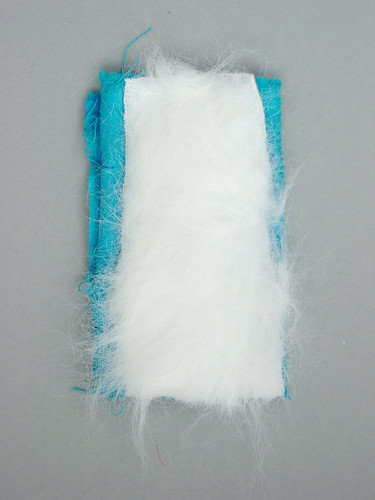
Fluffy cover. Making by Kat Webb
Texture
Something this fluffy tells stories by virtue of its difference from regular mobiles. I’ve got my mobile in my hand so much of the time, when I’m expecting a call, mooching on the Underground, or sitting with friends in a bar. Often I’m not even looking at it, I’m just playing. Why shouldn’t it be something that feels pleasant? There’s the problem about it getting dirty, of course, and that fabric wears… but people have pretty and delicate purses which are handled just as often, and those aren’t a problem. So what’s the difference? Maybe it’s something to do with the fact phones don’t invite these kind of covers, and I’ll come back to it later. In the meantime, just think about a mobile you want to stroke.
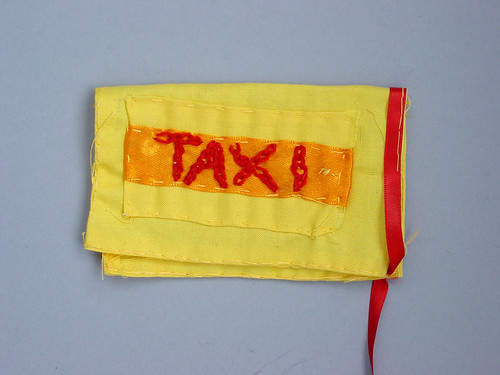
Money pouch
Taxi
It’s a simple gag, this one: You need somewhere else to keep a spare tenner for the taxi home because if it’s in your wallet on a big night out, it’s going to get spent. And what else do you always have with you? Your phone.
To draw a moral out (admit it, you knew I’d work one in), think about why there aren’t covers like this already: Here’s one reason: It’s hard to make well-fitting covers, because the people who can make creative and good-looking covers generally aren’t engineers. Here’s another: Uses like the “taxi” pocket cover are highly situated in certain social groups and geographical areas. With a culture of mass manufacture, the designers who might make these covers are too far from the people who might buy them, and so the ideas don’t come to fruition.
Instead of this manufacture culture, how about one where phone covers (even the phones themselves) are designed and made locally, in runs of only a few hundred, if that? How could we make it possible for non-experts to co-design the phone for their friends, neighbours, and people in their town? I’m talking about a culture of casual manufacture (that is, amateur and part-time), or folk factories (bottom-up and commonsense).
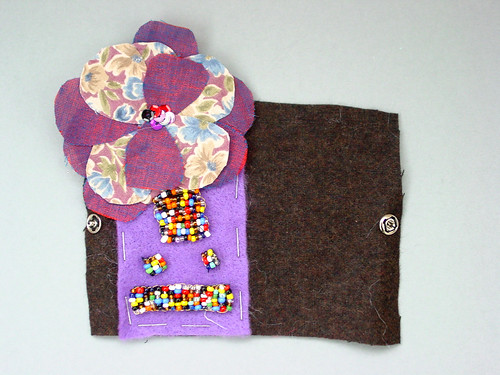
Beads, felt and flower
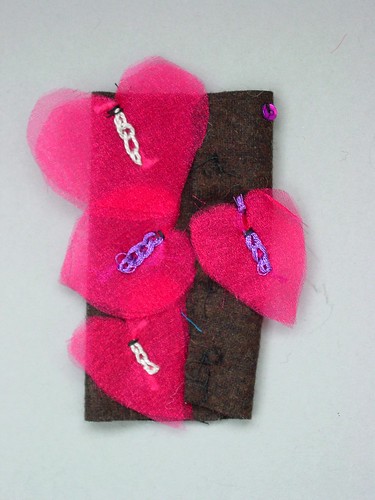
Gauze and velcro
Repositioning
Something that doesn’t really come across in these photos is the material itself. The brown background is hard felt, which is tough but can eventually be torn. The red and purple flower petals are made from transparent gauze, which shimmers and can—just—be seen through. The beads are tightly threaded and joined together, and they make a surface that’s fun to run your nail along.
All the elements have velcro on the back, and can be repositioned to sit anywhere on the silk. It’s enjoyable, moving the pieces around to make different patterns. In the spirit of material exploration, these objects make me think in two, quite new directions:
Layering is true to the way paper (in the form of magazines) and fabric (as gauze and crochet) work. It also, as the layers disappear, demonstrates the impermanence of the material. Yet, although removing layers is generally destructive, it’s so compelling: We pick, we peel, we unwrap. How about a cover where the layers are different colours, and can be torn off to reveal the layer underneath, like a gobstopper? You’d spend your idle time making swirl and stripe patterns, or peeling all the way back to a solid colour, or using the torn-off scraps for notes and phone numbers. It would be a cover that invited you to participate with it.
And speaking of participation, I also think of patchwork. If the cover is composed of many similar parts, these flowers, or squares of fabric could be individually decorated and swapped. I’m thinking especially of the pattern of activity in schools around friendship bracelets here (example; more to see; detailed site). Kids invest time in knotting these bands, and give them as a demonstration of friendship and caring. Could individual patches have a similar use, if they were made to be carefully decorated and given to others? I’m wary of appearing to see a cultural practice and advocating leaping in to take advantage of it commercially… Instead I’m just thinking, why doesn’t the physical form of my phone lend itself more to object-centered sociality (ably described by Jyri Engeström)?
These are both ideas I’d like to explore further.
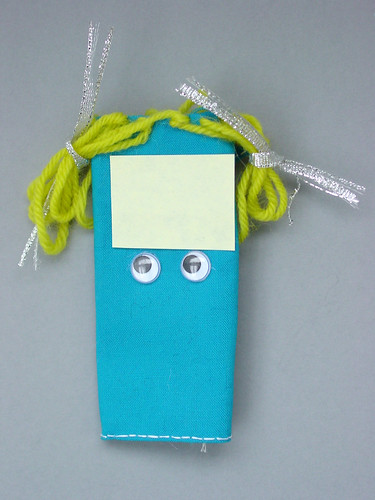
Face
Doll
I’ve left my favourite till last. Kat made me laugh with this—it’s a mobile phone with hair. If you don’t keep its hair up in bunches, you can’t see the screen. To be honest, it feels like I have to give my phone that much grooming, maintenance and attention already, so we might as well make it explicit.
Again, just holding this in my hand sparks ideas: Is playing with a doll a physical casual game for young children? Could we have equivalents now? What other interruptible attractions could the surface of my mobile have—a Zen garden, rosaries?
Reflections
One of the reasons people don’t make covers like this now may be because it’s too difficult. Once you take the plastic cover off a phone, you also lose the keys, the power switch, the splash-proofing, and the battery cover. The outer surface is too solid, and the inner surface is too weak. How good it would be to have an in-between surface which still had keys and splash-proofing, but wasn’t robust enough to go in your pocket with your keys.
Perhaps that surface could also have fabric fasteners on it (as in the third photo, above), to encourage people to make other covers.
I’m reminded of John Maeda talking about nude electronics and fabrics. He said: Have technology toys always been… naked… until recently? […] The object inside can be pure, simple, and cool; while its clothing can be warm, vivacious, and simply outrageous.
Practically, a fabric cover, especially a layered one, means that my phone in my pocket won’t have a tough exterior to smash up my camera or rub away at my jeans. But for people to use fabrics, the covers have to be “vivacious” and “outrageous”, which are judged subjectively, and so we also need a culture of local manufacture. What we’re finding in this exploration is that there are changes the phone manufacturer can do to encourage that, and illustrations we can make to provoke designers into thinking that way.
Other material explorations
Other material explorations are linked from the Materials explored post.
